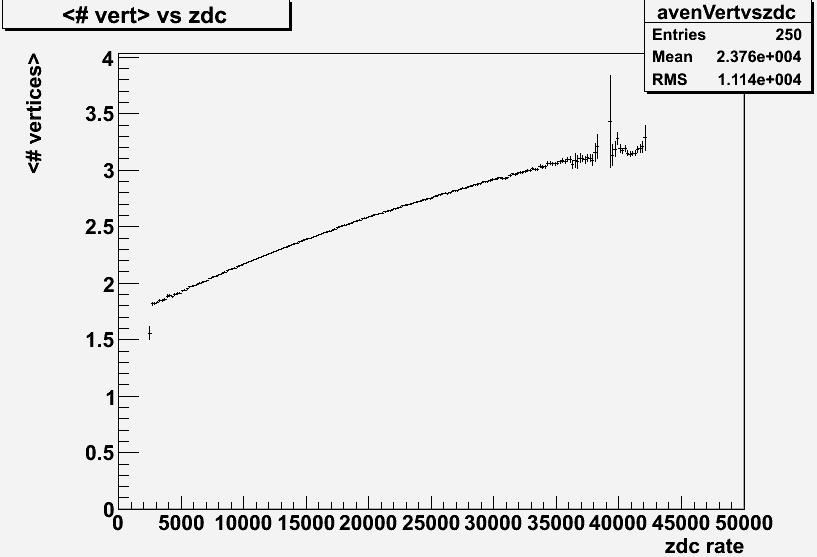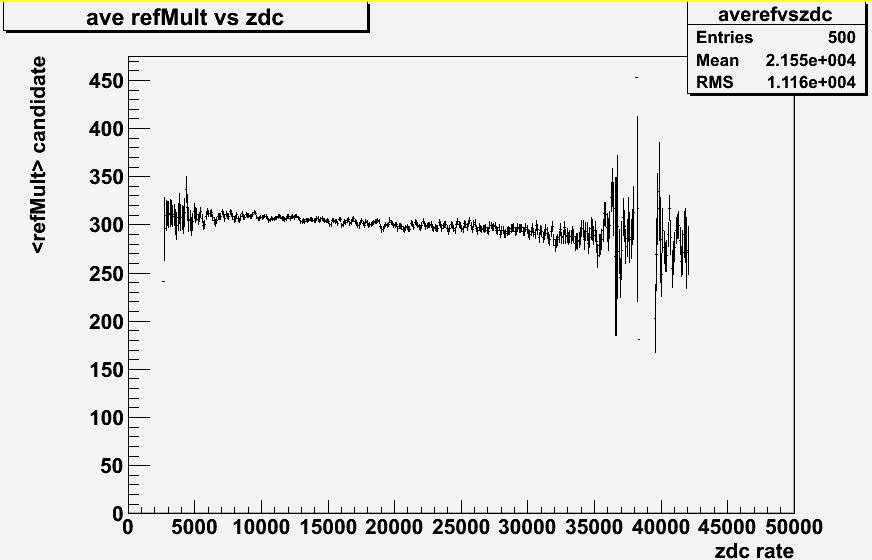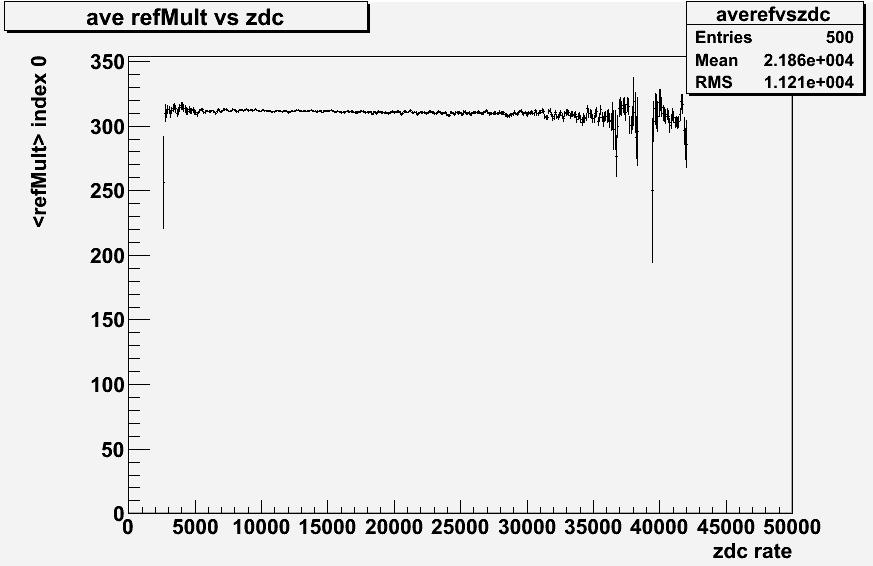QA for Run 10 Au+Au
.jpg)
Figure 1: Average refMult versus zdc rate for high tower triggered events. These events were in the st_ht stream and matched trigger 260524. The only selection criteria is that the event has a mudst and at least one vertex.

Figure 2: Average # of vertices in the events from figure 1 versus ZDC.
These plots illustrate an issue with the run 10 data for those who do not use the vpd. The problem is that in an event with multiple vertices, a vertex that has an expected number tracks matched to fast detectors < 0 gets a constant rank for that detector. The expected number is based on the fraction of global tracks that are matched to that detector, the problem is that as the zdc rate goes up the amount of pile-up tracks go up and so this fraction goes down. So this means an out-of-time pile-up vertex with a small number of tracks is more likely to be the highest ranked vertex as the rate goes up if the "real" vertex has an unlucky fluctuation.
If I use one vertex per event and require that vertex has a track that matches to a tower that could have fired the detector, I get:

Figure 3: RefMult of vertex with a track that extrapolates to trigger tower. E/p < 3, nSigmaElectron > -2 and the usual track quality cuts.
And, if a person requires that |Vz-vpdVz|<4 cm:

Figure 4: Average refmult vs zdc for above high tower triggered events with the additional criteria of |Vz-vpdVz|<4 cm.
- rjreed's blog
- Login or register to post comments
